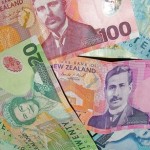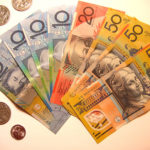Gold swung between gains and losses on Thursday after overall upbeat data from the U.S. on Wednesday reinforced speculations for an earlier-than-expected deceleration of Feds quantitative easing program. Assets in the SPDR Gold Trust, the biggest bullion-backed ETF, fell to the lowest since early 2009, adding to bearish sentiment. However, robust physical demand from China and a weaker dollar underpinned the market. Silver and platinum fell, while palladium advanced.
On the Comex division of the New York Mercantile Exchange, gold futures for settlement in February were little changed at $1 242.50 per troy ounce at 9:35 GMT, up 0.08% on the day. Prices varied in a daily range between session high of $1 244.40 and days low at $1 234.70 an ounce. The precious metal lost 0.4% on Wednesday but was almost unchanged on weekly basis on Thursday.
Gold fell following a series of overall positive key U.S. data points, despite some signs of weakness. The Labor Department reported that the number of Americans who filed for initial unemployment benefits fell by 10 000 to a two-month low of 316 000 in the week ended November 23, defying analysts’ projections for an increase to 330 000. Applications for the previous week were revised up by 3 000 after being initially estimated at 323 000.
The four-week moving average, which smooths out weekly volatility, fell by 7 500 to 331 750, indicating a steady improvement in the U.S. labor market. The insured unemployment rate, which includes the jobless people eligible for aid, fell to 2.1% in the week ended November 16, down from 2.2% in the previous period.
The number of people who continued to receive unemployment benefits slid by 91 000 to 2.776 million, the lowest since January 2008, sharply outperforming analysts’ expectations for a 14 000 drop. Those Americans who have exhausted traditional state help and are receiving extended benefits under federal programs rose by 3 400 to 1.31 million in the week ended November 9.
However, the Commerce Department reported that orders for U.S. durable goods fell in October, coinciding with recent reports which suggested confidence in the U.S. was hurt last month by the 16-day government shutdown. Bookings for goods set to last at least three years fell by 2.0% in October as demand for civilian and defense aircraft plunged, marking a major retreat from September’s upward-revised 4.1% advance. Analysts expected a 1.9% contraction.
Demand for non-defense capital goods orders ex aircraft, a gauge for future business investment in computers and other equipment, fell by 1.2% in October after they retreated by 1.4% in September, suggesting economic growth may slow in the fourth quarter.
Separate data showed manufacturing activity in the Chicago region eased from a month earlier but remained firmly in the expansion zone. The Chicago Purchasing Managers Index fell to 63.0 in November from 65.9 a month earlier, but outperformed expectations for a drop to 60.5. Readings above the neutral level of 50 indicate advancing activity in the respective sector.
The metal was further pressured after a private report showed rising consumer confidence, backing the case for an earlier-than-expected Fed tapering. The Thomson Reuters/University of Michigan final index of consumer sentiment jumped to 75.1 in November after plunging to an eight-month low of 72.0 in October. Analysts expected a moderate rebound to 73.5.
Assets in the SPDR Gold Trust, the biggest bullion-backed ETF, fell to 843.21 tons on November 27 from 848.91 tons a day earlier, data on its website showed. This was the lowest level since January 2009. Holdings in the fund saw outflows of more than 460 tons this year as major investors lost faith in the metal as a store of value.
Bart Melek, the head of commodity strategy at TD Securities in Toronto, said for Bloomberg: “The U.S. confidence number is telling us that the economy is on the right track, and that’s not so good for gold. While physical demand is a nice story, the support from it is limited.”
China demand
The precious metals losses were limited on strong demand from China following the recent decline in prices and as jewelers and retailers restock inventories with the peak-gold demand season of the year coming closer.
Data compiled by Reuters showed that traded volumes of 99.99% purity gold on the Shanghai Gold Exchange rose to 18.3 tons on Thursday, the highest since October 8.
According to calculations by Bloomberg, based on data from the Hong Kong Census and Statistics Department, net imports, after deducting flows from China into Hong Kong rose to 129.9 metric tons in October, compared to 109.4 metric tons a month ago. The data also showed that purchases reached an all-time high of 130 tons in March and the amount for the first 10 months of 2013 surged to 955.9 tons, more than double from a year earlier.
China is the world’s second biggest importer, but is expected to overtake India as the world’s biggest bullion consumer, with demand poised to reach 1,000 tons this year, according to the World Gold Council.
A weaker dollar also eased pressure on the metal. The U.S. dollar index, which measures the greenbacks performance against a basket of six major peers, traded at 80.61 at 9:36 GMT, down 0.15% on the day. The December contract varied between days high and session low of 80.76 and 80.56. The U.S. currency gauge jumped 0.1% on Wednesday but plunged to negative weekly territory following Thursdays decline. Weakening of the greenback makes raw materials denominated in it cheaper for foreign currency holders and boosts their appeal as an alternative investment.
Elsewhere on the precious metals market, silver futures for settlement in March fell by 0.67% to $19.760 per troy ounce by 9:27 GMT. Prices plunged to a 4-month low of $19.615 per ounce on November 25. Platinum for delivery in January traded at $1 362.40 an ounce, down 0.69% on the day, and held in range between session high of $1 363.65 and days low of $1 351.70, near yesterdays five-month low of $1 351.10. Palladium March futures jumped 0.62% to $720.40 per troy ounce by 9:31 GMT and shifted in a days range between $721.50 and $716.70 an ounce.





